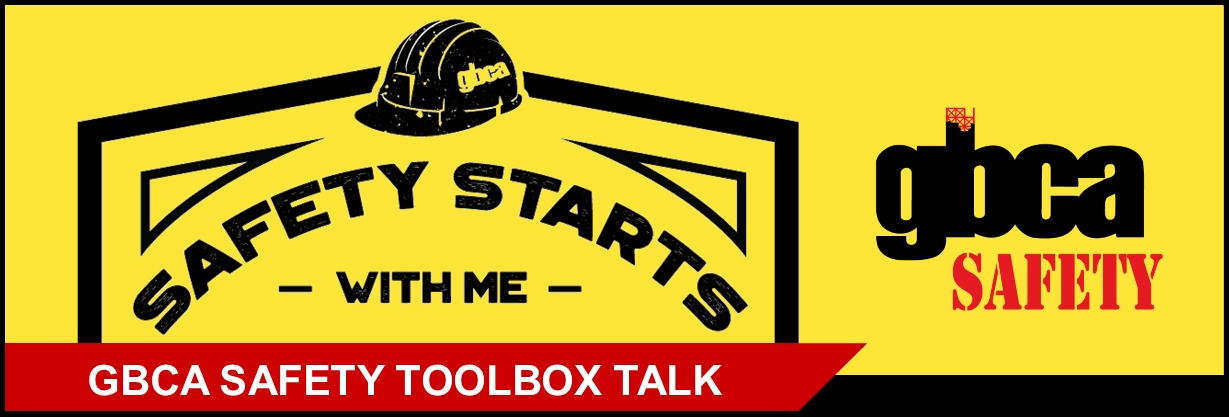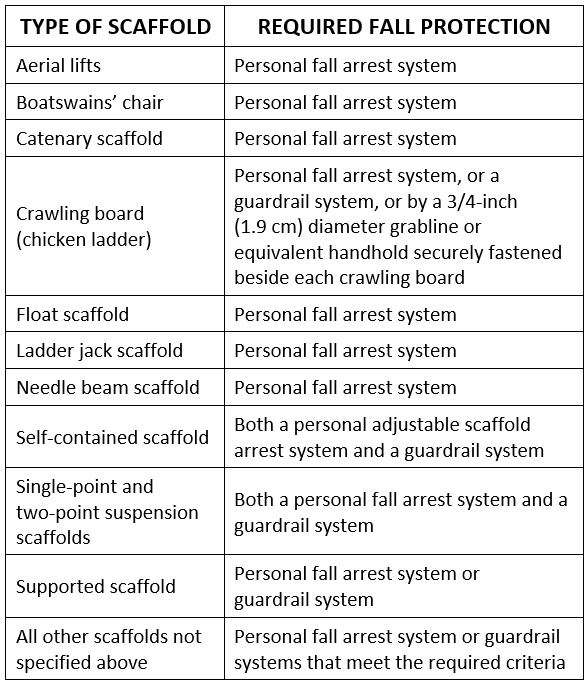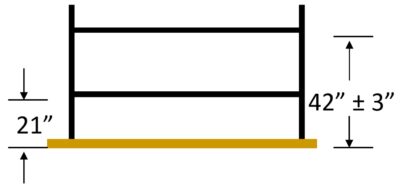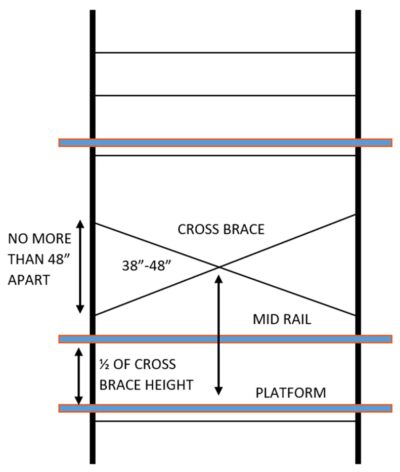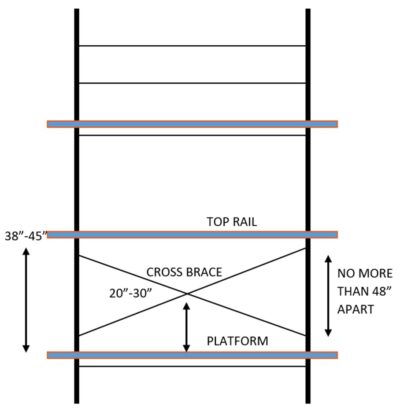This GBCA Safety Toolbox Talk discusses fall protection on scaffolds. Click below to download the Toolbox Talk as a handout (includes Sign-In Sheet).
Fall Protection on Scaffolds
Scaffolding is a temporary structure used to access difficult to reach areas, such as higher elevations or open distances. When constructed, used, and maintained properly, scaffolds provide workers with a safe platform from which to work. This toolbox talk provides information on required fall protection on varying scaffold types, per OSHA standards.
Fall Protection When Working on Scaffolds
- Fall protection on scaffolds includes guardrail systems and personal fall arrest systems.
- Personal fall arrest systems include harnesses, components of the harness/belt such as Dee-rings, and snap hooks, lifelines, and anchorage point. 1926.451(g)(3)
Fall Protection Requirements for All Scaffolds
- Employers must provide fall protection for each employee on a scaffold more than 10 feet (3.1 meters) above a lower level. 1926.451(g)(1)
All Arrest Systems for Scaffolds and Aerial Lifts
- Workers on scaffolds shall use personal fall arrest systems when there are no guardrail systems. 1926.451(g)(1)(vii)
- Use fall arrest systems when working from the boom/basket of an aerial lift. 926.453(b)(2)(v)
Guardrail Systems for Scaffolds
- Guardrail systems must be installed along all open sides and ends of platforms.
- No guardrail is required on a side or edge of any work platform that is no more than 14 inches from the face of the work for most operations, and no more than 18 inches for plastering and lathing operations. If these distances are exceeded, fall protection must be provided by the employer.
- The height of the top-rail for scaffolds must be between 38 inches and 45 inches above the work platform. The mid-rail shall be installed at a height approximately midway between the top edge of the guardrail system and the platform surface.
Cross Point of Cross Bracing on Scaffolds
- When the cross-point of cross-bracing (also known as x-bracing) is located between 38 inches and 48 inches above the work platform, it can be used as the top-rail of a guardrail
system as long as the end connections are no more than 48 inches apart vertically.
- When the cross-point of cross-bracing falls between 20 inches and 30 inches above the work platform, it may be used as the mid-rail of a guardrail system, as long as the end
connections are no more than 48 inches apart vertically.
Remember to record the attendees of your toolbox talk!
Access GBCA’s full library of toolbox talks:

